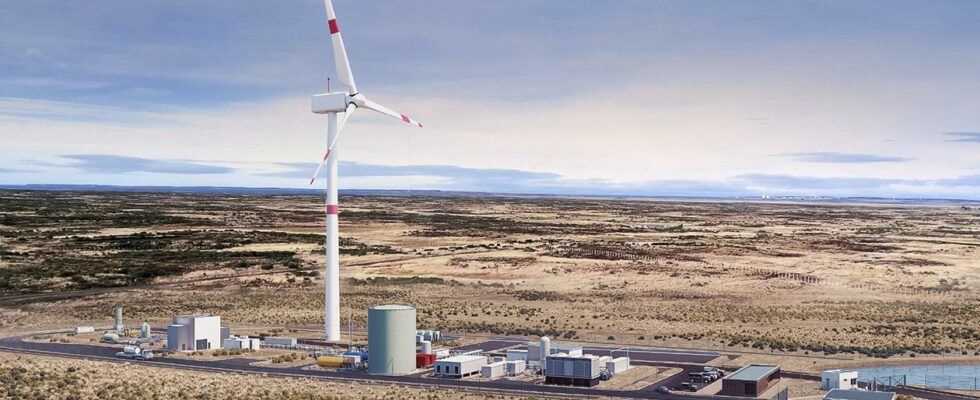eFuels, i.e. fuel artificially produced from green electricity and CO2, could make a major contribution to climate protection. If internal combustion engines are powered with such fuels, they are practically climate-friendly from now on. Together with Siemens in Chile, Porsche has broken the first sod for a plant that will produce such eFuels on a large scale.
To the north of Punta Arenas in the Chilean Patagonia, a pilot plant is initially being built that will produce around 130,000 liters of this almost CO2-neutral fuel in 2022. The capacity is then to be expanded in two stages to around 55 million liters of eFuels by 2024 and to around 550 million liters of eFuels by 2026. This corresponds to around one percent of the fuel burned in cars in Germany each year.
“We are jointly developing and realizing the world’s first integrated and commercial large-scale plant for the production of synthetic, climate-neutral fuels,” said Siemens Energy CEO Armin Schnettler. “In the south of Chile, we are implementing one of the most exciting future projects in the energy industry and driving the decarbonization of the mobility sector. We are thus making an important and quickly effective contribution to reducing CO2 emissions in the traffic and transport sector. “
Porsche initiated the demonstration project and will use the eFuels in its own vehicles with combustion engines. Michael Steiner, Executive Board Member for Research and Development at Porsche AG, sees Porsche as a pioneer in renewable fuels: “Overall, Porsche wants to be CO2-neutral by 2030. Fuels made with renewable energy can make a contribution. Our icon, the 911, is particularly suitable for the use of eFuels. But also our popular historic vehicles, because around 70 percent of all Porsches ever built are still on the road today. The tests with renewable fuels are very successful. With eFuels, up to 90 percent of the fossil CO2 emissions in the combustion engine can be reduced in the future. “
Chile wants leadership in green hydrogen
Chile has set ambitious goals as part of its National Green Hydrogen Strategy. An electrolyser capacity of 5 gigawatts (GW) is planned there by 2025, which is to increase to 25 GW by 2030. The aim is to produce the cheapest hydrogen in the world and to develop the country into a leading exporter of green hydrogen and its derivatives.
This is how the system works
The “Haru Oni” project uses the perfect climatic conditions for wind energy in the province of Magallanes in southern Chile to generate the CO2-neutral fuel with the help of inexpensive green wind power. In a first step, electrolysers use wind power to split water into oxygen and green hydrogen. Then CO2 is filtered out of the air and combined with the green hydrogen to make synthetic methanol, which in turn is converted into eFuel. The start of production of the pilot plant is planned for mid-2022. In addition to Siemens Energy, Porsche and HIF, Enel, ExxonMobil, Gasco and ENAP are also participating in the “Haru Oni” project.
